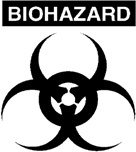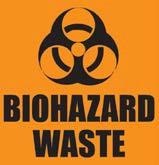Employees shall be provided, at no cost, PPE necessary to prohibit blood or OPIM from passing through or reaching the employees' work clothes, street clothes, undergarments, skin, eyes, mouth, or other mucous membranes under normal conditions of use and for the duration of time which the protective equipment will be used.
Employees shall use appropriate PPE unless the employee temporarily and briefly declines to use PPE, under rare and extraordinary circumstances, when the employee believes that in a specific instance its use will prevent the delivery of health care or public safety services or would have posed an increased hazard to the safety of the employee or other employees.
Cleaning, laundering, disposal, repair, and replacement of PPE shall be the responsibility of the University.
All PPE shall be removed prior to leaving the work area. If a piece of garment is penetrated by blood or other potentially infectious materials, the garment shall be removed immediately, or as soon as feasible.
When PPE is removed, it shall be placed in an appropriately designated area or container for storage, washing, decontamination, or disposal.
Hand Protection
Gloves shall be worn when it can be reasonable anticipated that the employee may have hand contact with blood, other potentially infectious materials, mucous membranes, non- intact skin, and when handling or touching contaminated items or surfaces.
Disposable (single use) gloves shall be replaced as soon as practical when contaminated or as soon as feasible if they are torn, punctured, or when their ability to function as a barrier is compromised.
Disposable (single use) gloves shall not be washed or decontaminated for re-use.
Utility gloves may be decontaminated for re-use if the integrity of the glove is not compromised. However, they must be discarded if they are cracked, peeling, torn, punctured, or exhibit other signs of deterioration or when their ability to function as a barrier is compromised.
Latex gloves used in a wet procedure shall be replaced after one hour of use. Nitrile or other (vinyl, neoprene, etc.) gloves will be made available to employees as a substitute to latex gloves.
Eye and Face Protection
Masks, Eye Protection, and Face Shields
Masks in combination with eye protection devices such as goggles or glasses with solid side shields or chin-length face shields, shall be worn whenever splashes, spray, spatter, or droplets of blood or other potentially infectious materials may be generated and eye, nose, or mouth contamination can be reasonably anticipated.
Body Protection
Appropriate protective clothing (gowns, aprons, and other protective body clothing) shall be worn in occupational exposure situations.
Contaminated laundry shall be handled as little as possible with a minimum of agitation. Contaminated laundry shall be bagged and shall not be sorted or rinsed by university personnel.
Contaminated laundry shall be placed in red bags that prevent soak through and/or leakage of fluids to the exterior. If contaminated laundry is sent to a facility, which does not utilize Universal Precautions in the handling of all laundry, the university shall ensure that the red bags are labeled with the universal biohazard symbol and the legend BIOHAZARD.
Employees having contact with contaminated laundry shall wear protective gloves and other appropriate PPE.

